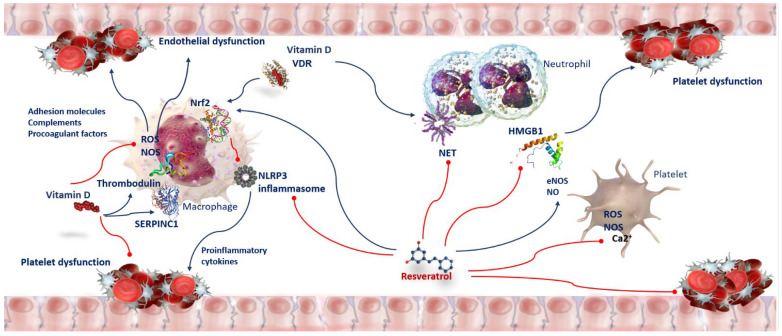Figure 3.
Anti-oxidant and anti-thrombotic activity of Vitamin D and Resveratrol in COVID-19. Oxidative stress affects platelet function. Adhesion molecules, complements, and procoagulant factors trigger endothelial dysfunction, increased leukocyte and platelet reactivity, and activation of coagulation. Vitamin D/VDR prevents ROS-mediated activation of NLRP3 by Nrf2 translocation to the nucleus, inducing its transcriptional activity for antioxidant enzymes to inhibit oxidative stress. Vitamin D increases the levels of SERPINC1 transcripts and antithrombin. Resveratrol moderates ROS and NOS, inhibits arachidonic acid metabolism and hampers Ca2+ entry into platelets. Resveratrol exerts antithrombotic properties by increasing the activity of nitric oxide endothelial synthase (eNOS) and NO levels. Resveratrol-induced NO production results from its direct interaction with SIRT1 and Nrf2. Resveratrol exerts anti-inflammatory effects inhibiting HMGB1-mediated signaling pathway. Abbreviations: Ca2+—Calcium ion; eNOS—nitric oxide endothelial synthase; HMGB1—high-mobility group box 1; NET—neutrophil extracellular traps; NLRP3—NLR family pyrin-domain-containing 3; NOS—nitric oxide synthase; Nrf2—nuclear factor erythroid-2-related factor 2; ROS—reactive oxygen species; SERPINC1—serpin family C member 1; VDR—vitamin D receptor.

